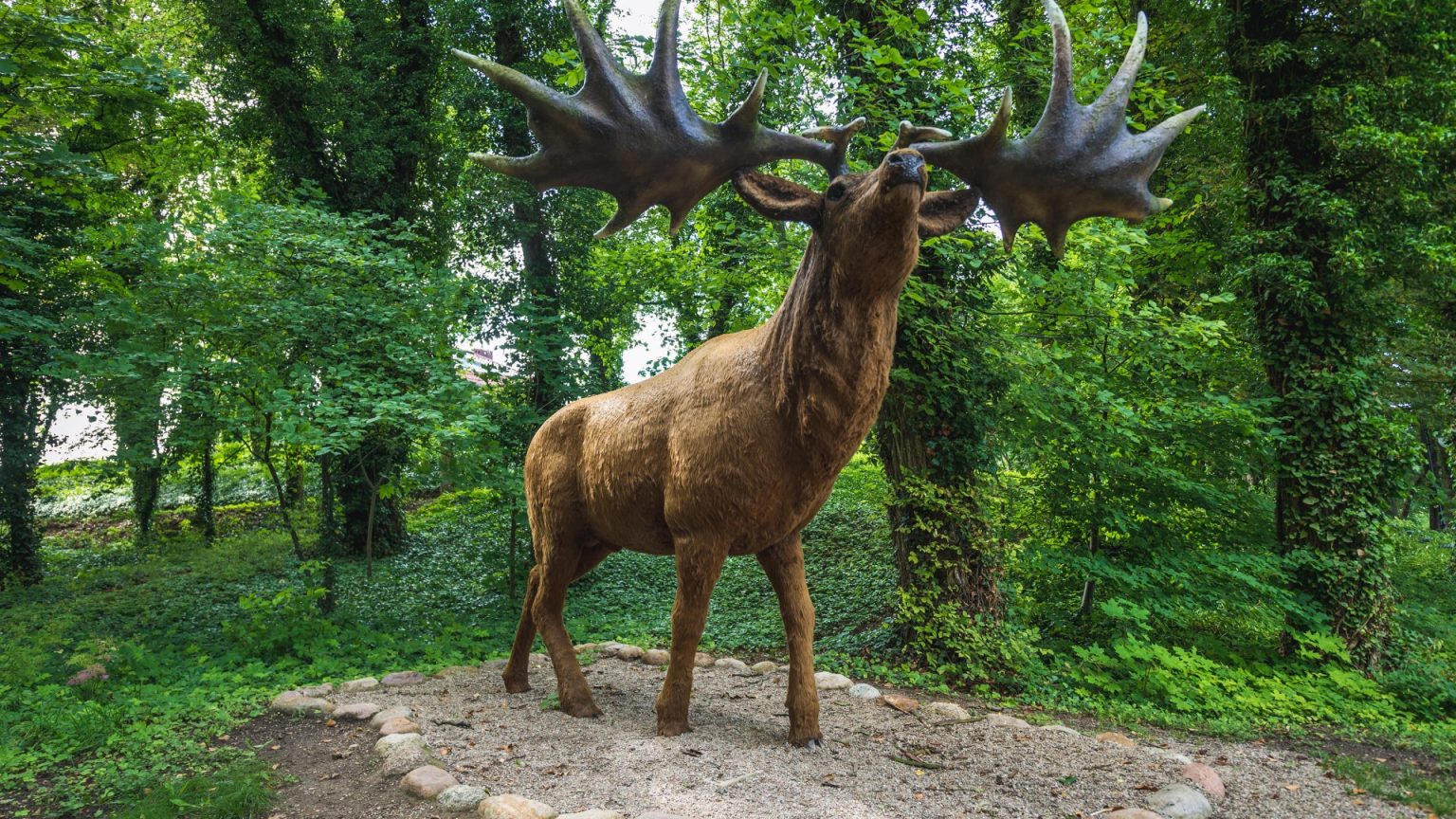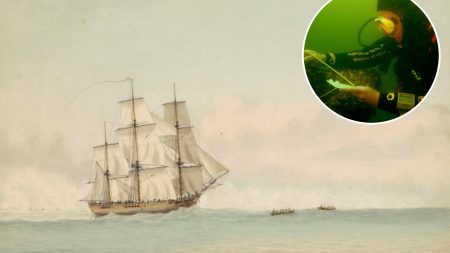The British Isles, now home to relatively modest-sized mammals like the red deer, were once a realm of giants, a Pleistocene playground for megafauna that would dwarf their modern counterparts. Woolly rhinos, behemoths exceeding 11 feet in length and tipping the scales at over two tons, roamed the frigid landscapes of Scotland and other northern reaches. Cloaked in thick, reddish-brown fur, these imposing herbivores shared the icy terrain with woolly mammoths and early humans, the latter leaving behind captivating cave paintings that offer glimpses into the rhinos’ appearance and the dynamics of this prehistoric ecosystem. The stark environment, resembling an Arctic tundra, presented a challenging backdrop with temperatures plummeting to -22°C in winter and barely reaching 10°C during the fleeting summers.
Towering over even the woolly rhino was the Irish Elk (Megaloceros giganteus), a majestic creature whose stature dwarfed the early humans it coexisted with. Standing at an impressive 6.5 feet tall and boasting antlers spanning an incredible 12 feet, the Irish Elk thrived in the dense forests that blanketed the ancient British Isles and mainland Europe. These impressive antlers, likely a source of both awe and intimidation for early humans, are immortalized in cave drawings discovered in Southern France. Fossil evidence places the Irish Elk’s existence between 400,000 and 8,000 years ago, painting a picture of a creature that commanded the landscape for hundreds of millennia.
During a warmer interglacial period approximately 700,000 years ago, the British Isles experienced a milder climate, fostering lush forests that provided a haven for the straight-tusked elephant. These colossal herbivores, among the largest land mammals to ever exist, reached shoulder heights of 13 feet and weighed in at a staggering 13 tons. Their presence in the region is well-documented, with four separate remains discovered in Oxfordshire alone, dating back between 500,000 and 125,000 years ago. These findings offer a tangible connection to a time when these giants roamed freely, shaping the prehistoric landscape.
The frigid past of the British Isles may have also hosted an apex predator—the polar bear. Evidence suggests that these iconic Arctic hunters may have stalked the Scottish landscape around 50,000 years ago, predating human settlement. Remains unearthed in the Bone Caves of Inchnadamph, initially believed to belong to another species, have been re-evaluated, raising the possibility that they represent either polar bears or a sub-species of brown bear with a distinctly marine diet. Analysis of the fossils revealed a dietary profile heavily reliant on seafood, mirroring the habits of modern polar bears and distinguishing them from contemporary brown bears, whose diets consist of terrestrial animals, plants, and occasional salmon.
Venturing further back in time, the Jurassic period reveals a different kind of giant inhabiting the waters surrounding the British Isles: the sea crocodile. In 2023, a new species, Turnersuchus hingleyae, was identified, a two-meter-long predator that patrolled the seas approximately 185 million years ago. This discovery adds to the growing body of knowledge about thalattosuchians, a group of marine crocodyliforms that experienced a rapid diversification during the Toarcian age (183-174 million years ago). The sudden appearance of these creatures in the fossil record suggests a dynamic evolutionary period, with Turnersuchus hingleyae representing a fascinating piece of this ancient puzzle.
These glimpses into the distant past of the British Isles reveal a world dramatically different from the present, a land shaped by ice, swamps, and colossal creatures. From the woolly giants of the Ice Age to the marine predators of the Jurassic, these long-extinct species offer a fascinating perspective on the ever-changing tapestry of life on Earth and the dramatic transformations that have shaped the landscapes we know today. Their presence, though now only evident through fossil remains and ancient artwork, serves as a powerful reminder of the profound impact of time and environmental change on the evolution and distribution of life on our planet.











